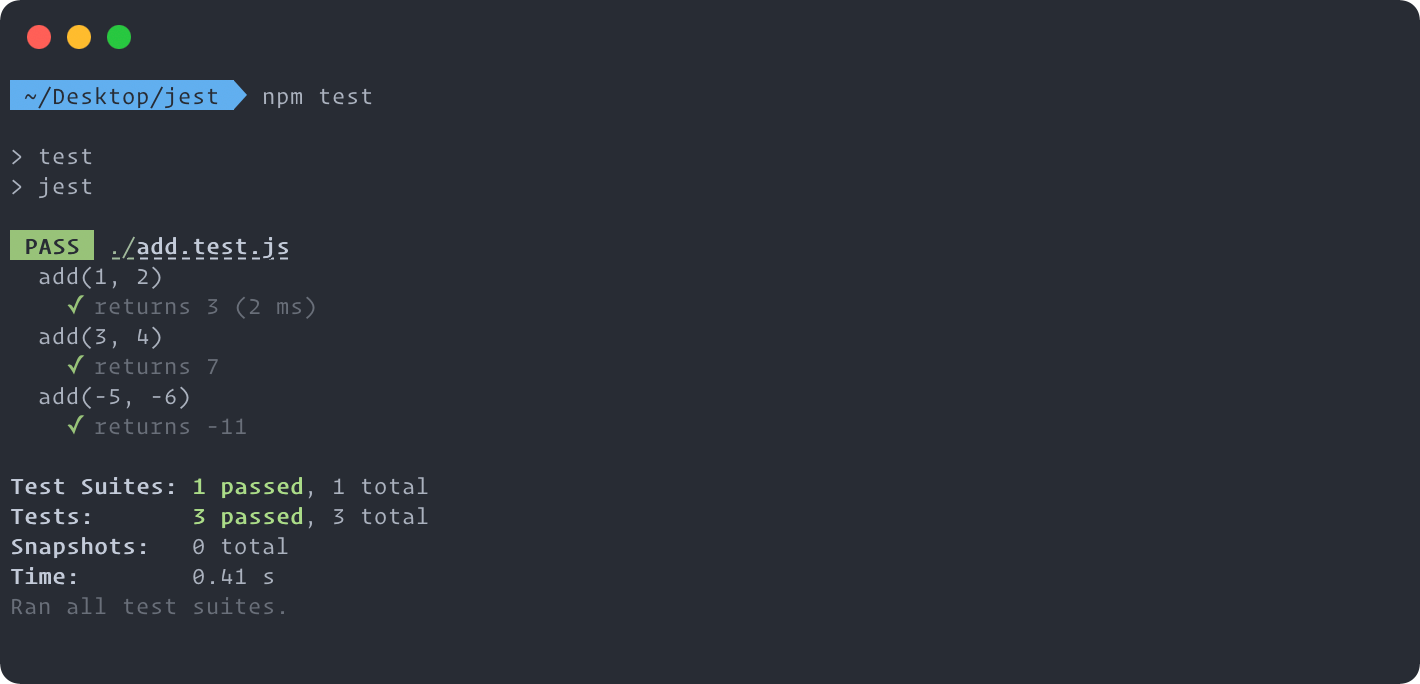describe.each simplifies test suites that work with different data but test the same function.
describe.each([
{ a: 1, b: 2, expected: 3 },
{ a: 3, b: 4, expected: 7 },
{ a: -5, b: -6, expected: -11 },
])('add($a, $b)', ({ a, b, expected }) => {
it(`returns ${expected}`, () => {
expect(add(a, b)).toBe(expected);
});
});
In addition, you can use tagged template literals to do the same thing.
describe.each`
a | b | expected
${1} | ${2} | ${3}
${3} | ${4} | ${7}
${-5} | ${-6} | ${-11}
`('add($a, $b)', ({ a, b, expected }) => {
it(`returns ${expected}`, () => {
expect(add(a, b)).toBe(expected);
});
});
(However, it’s usually easier to use a plain array of objects.)
In Jest’s CLI output, the table is executed and represented as standalone test cases.
